Movies
Interview: Adam Ethan Crow on ‘Lair’ and the Teamwork Behind the Terror
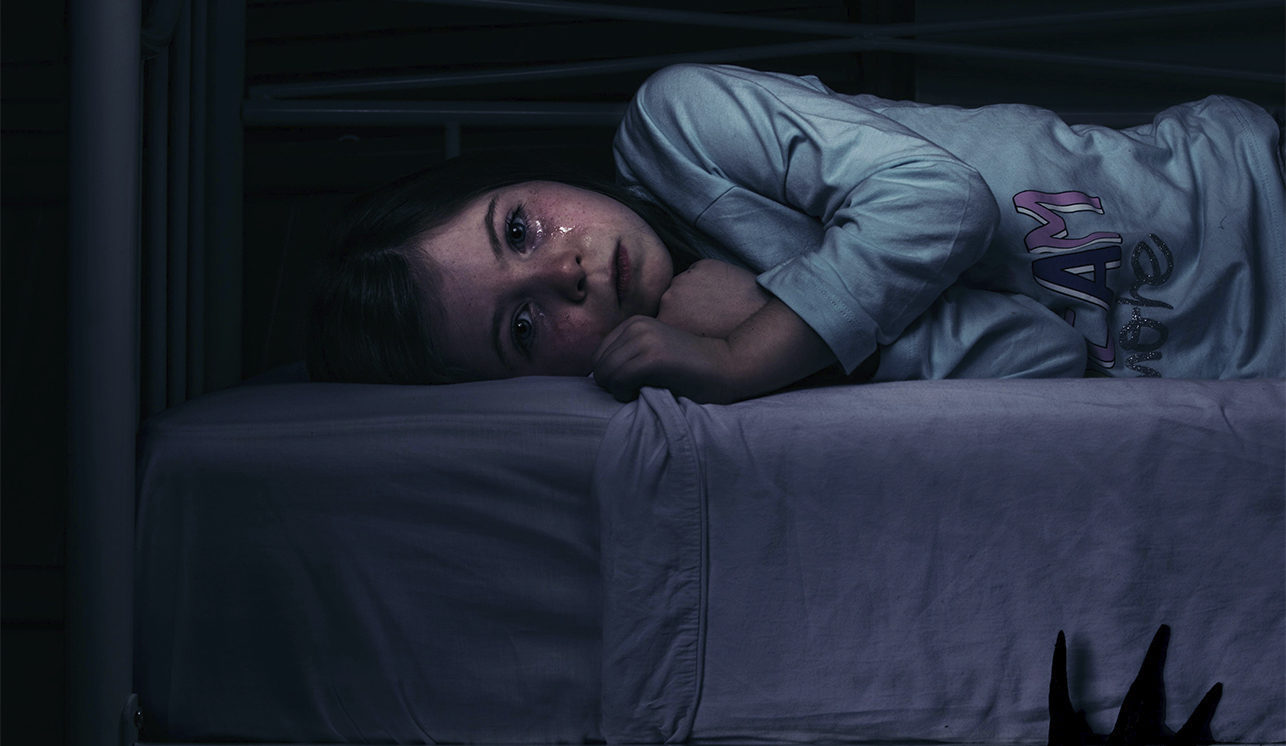
Adam Ethan Crow’s feature film directorial debut is a real passion project. Not just for him, but for the collective of actors and crew that pulled together to make Lair happen. The film looks and feels far higher in quality than its micro-budget should allow, but it’s because so many talented artists came together to put their heart and souls into the project to make it come to fruition.
In Lair, a family who unknowingly book an Airbnb that’s being used to test out various ‘cursed’ objects end up getting trapped in the vacation from hell. Though it may seem like a posh London flat, it’s a supernatural trap, set to lure pure evil and prove its existence, no matter the body count.
With opening credits that announce Lair as a “film by a family of filmmakers”, it truly is a collaborative effort. I had a lively conversation with Crow about Lair, the teamwork behind the terror, and his experience making it all happen.
Kelly McNeely: I love the idea of cursed objects as a trap, by the way.
Adam Ethan Crow: Thank you so much! It’s one of those things where I’m a horror fan, and I wanted to do something a little bit different. And one of the things that made me come up with the idea was I always liked in The Conjuring, the room where they keep Annabelle. I was like, I wonder what would happen if they put people in that room to see what happened, and left them for a few days. And that’s where the idea came from.
It’s been fun. And we’ve been blown away by the reaction. I don’t know if you know, but it was originally to be a studio film. We were picked up by Fox, we had a couple of million bucks. We were making a movie, we were about 10 days into choosing camera packages and designing set builds, and then the Disney deal went through. And all of a sudden, there were like eight films that were dropped, and one of them was ours. So we went from — if you can imagine — four years of trying to raise money to make a movie, to “we’re now making a movie with millions of dollars!”, and then, nothing. So it’s been a roller coaster.
It was one of the things where — I think with a lot of filmmakers — you kind of just try and pull yourself back together. And my partner, Shelley, had never produced anything before, and I had only done short films. We were like, we got a couple of bucks in savings, so we put that in. And we had actually 17 of our friends who pitched in with 1000 bucks here and a couple of grand there. And we made a little micro budget movie and put it out into the world.
Although we’re in the UK, and one thing I discovered which was very, very different between the UK and America; we got into Frightfest and a lot of festivals, and look, when anyone other than your grandmother says you did good? That’s kind of cool. And to get into Macabre and Fright Fest and Popcorn Frights… we were like, this is good, right? But I went to the filmmakers dinner at Frightfest and sat with this really cool American guy who was over for his movie. It’s a great movie. And we were talking about micro budget filmmaking, as you do. And he was like, yeah, we had like only $1.2 million. I’m going, really?! That’s a micro budget to you? He got off a plane, and I just got off the bus. It was a very different idea of what a micro budget was.
So yeah, I’m still learning. It’s my first film. And the reaction we’ve had has been great, and people seem to think that it’s got real production value, so you know and they like it so it’s good.
Kelly McNeely: So again, this goes back to The Conjuring which we were discussing earlier, but I love the kind of backflip on the personality of the Warrens there that you have with this really brash, abrasive debunker.
Adam Ethan Crow: That was exactly it! Yeah! We’ve had a few people who haven’t grabbed it like that, but it’s true, they kind of go in and they believe everything, well what if we had some guy who genuinely was like, I don’t believe in this but let’s see what if. And the other thing for me as well was, in so many horror movies you’ve always got the scary guys, always like in the shadows, like “I’m evil because I’m evil”, and I was like, what if we can have reason to do it, but he’s kind of doing it half heartedly. He’s not this evil caricature.
One of my favorite horror films — as you can probably tell by the coloring in the poster — is A Nightmare on Elm Street. In the score we’ve got this dinging, which is obviously a nod to him, and Freddy Krueger always got these one liners. I thought if I could grab someone who if you didn’t know they were evil, you would have a beer with. It was kind of amusing. And so that’s kind of what we came up with as well.
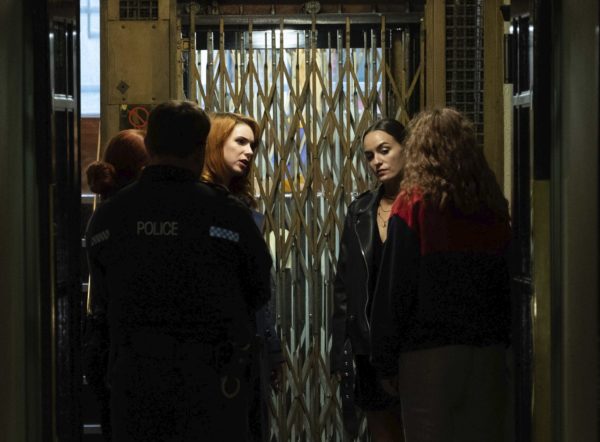
Kelly McNeely: So speaking of the character, Corey Johnson is so great in Lair, how much of that was him bringing it to the screen, and how much of that was already on the page with the script?
Adam Ethan Crow: I was really blessed because he did a short film of mine when he was in the UK filming Kingsman, and he gave me two days, I didn’t know him. And he turned up and we shot a film called Warhol. And he was amazing, and we just became friends. He’s got home over here as well as in the states. And so I wrote the character with him in mind. So some of the lines are mine, but there’s also like, I think he says, “Mother of Dragons!” or something at some point, so there were some lines he just came up with on the fly.
And this is my first film as well. So we’re working with someone, the actors we had, and it was so lucky. You know? Because again, you know, everybody who worked on Lair got paid, everybody from the runners to the HODs. But nobody got what they should have got paid. I mean, it’s a micro budget movie. You know, we everybody got something, everyone got fed. But it was in no way — I mean, the people we were lucky enough to work with like Corey, honestly, he had no reason to be in it other than he wanted to be part of Lair and thought it was a fun character.
But he would come up with stuff, there’s one point as well with Aislinn [De’Ath] and Elena [Wallace] — who play the couple — there’s one point where I literally read the sides and I went, this dialogue is crap, this page is not right. And I went over to them and said, guys, save me, what I’ve written isn’t working. And they went, okay cool. And they jammed. It was the part where they’re arguing in the corridor after Joey is talking to the boys. It came out better than anything I had on the page. I think, at this budget level, if you’re lucky enough to get people on that kind of level, if they’re willing to come up and help — and everybody collaborated on this — you run with it.
I mean, we got Oded [Fehr] because Corey did The Mummy with Oded, and they’ve been friends for years, and Corey said, I’ve been working on this little movie, there’s no money, and Oded was out filming Star Trek Discovery. And he was like, I’ve got five days coming up. You want me to come to England? Yeah! And we didn’t fly him first class or anything. He stayed at Corey’s house and turned up and shot for us and went back for — I don’t want to tell you how little — but we had so many people like that. Who were going, let’s just tell a fun story, man.
Because that’s what we were trying to do, tell fun stories that were different, and throw in some good scares. So yeah, a lot of it was Corey. A lot of it was Aislinn. And Anya [Newall] was amazing, she had never actually been in a movie before, she’d just done a bit of acting. Lara [Mount] — who played the little girl — had never acted in anything, she’d only done a school play. It was crazy cool. A lot of it was just people being awesome, and helping out, which I think is kind of the message right here.
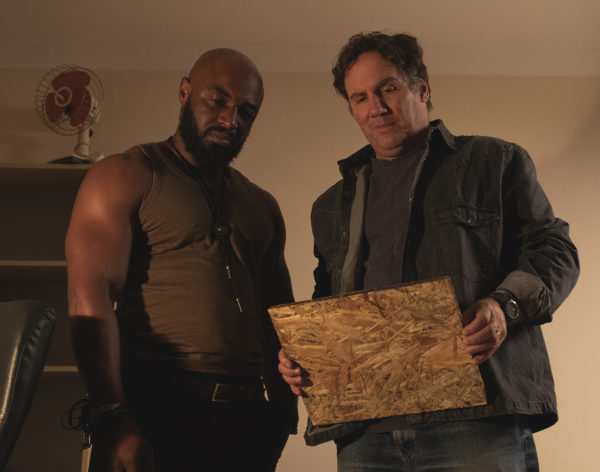
Kelly McNeely: Even in the opening credits, you’ve got it as “a film by a family of filmmakers”, which I thought was really lovely because it kind of speaks to that collaborative process you’re talking about.
Adam Ethan Crow: Because these people humbled me, I learned so much. If you ever look at my short films, I’ve done a couple that were 20 minutes long, and we got some accolades, it went really well. And on them, I did what most people do; I wrote the movie, I directed the movie, this was an Adam Ethan Crow film. But that’s three or four days, we shot this in 21 days with one camera and no money. And on that, the gaffer was also the spot, my [director of photography] was the co-producer as well as DP, I was getting coffee, and I’m the director, right? So it’s kind of like, I came out of that and I realized that I don’t believe in the auteur theory. Unless you’re getting coffee, if you’re in post production, if you’re doing everything… I think you need a single vision. But on every film I do, and if I’m lucky enough to do another movie — it looks like I’m gonna be — it’s not gonna have a film by me, it’s gonna be a film by all the people involved.
I was blown away by everybody. And to have “an Adam Ethan Crow movie” on the front just wouldn’t feel right. You know, it was all of us. And to the point where the VFX the creature effects and stuff like that was done by a buddy of mine, Tristan [Versluis]. And Tristan was my DIT operator on my first short film, he went off and did SFX, and he did really well, he’s doing great. And he gave us seven days. He said, look, I’m kind of playing with your monster, I’ll rebuild it for you. I’ve got seven days and that’s all I can do, and we’re like, great. He lives in Barcelona and came over, and we put him in a dodgy Airbnb. And he turned up for seven days, we pretty much just paid for his kit, and he built our creature and did our prosthetics and our murders and all that. And then he had to go to America. And I was like, okay, cool, are you starting another movie in the States? And he was like, no, I’ve just been nominated for an Oscar, so I’m going to do that. And I was like, what?! For 1917, he had just been nominated for an Oscar for VFX. He was like, look, I can fit it in around what I’m doing. And for what you’re paying, dude, you also owe me a bottle of wine.
And it was like honestly, you have no idea. I’m humbled by the people that helped out. And luckily, it looks like with the help of 1091 Pictures, because they’ve been amazing, honestly, we look like we’ve got financing for another movie, which we’re going to do in February, and this time we’re going to bring them all back, and we can actually pay them properly. They don’t have to live on pizza. How cool is that? Right. So that’s why it says what it does on the front, and anything I do, it will say the same again. Really, really lucky to be working with some great people.
Kelly McNeely: Congratulations on the next film! And just jumping back to the effects. How much of the effects in the film are practical? How did it all come into being?
Adam Ethan Crow: A lot of it was done practically. There were obviously certain things in there where people sort of fly through the air and get mashed up and stuff. So that sort of thing was a mix of both. It was quite interesting as well, because for instance, I don’t want to spoil anything, but when one of the people dies, a lot of it was practical, and then we’d bring fabric to put over certain parts of the body so we could remove legs or pull something apart or whatever. And then in post production, George [Petkov] would take over and do the VFX. So it was a mix of both all the way through.
Emily Haigh is in Lair, who’s fantastic. She came down and shot her parts. And then later on, there’s a big VFX shot with her where she’s on top of the wardrobe. And that was literally shot in a friend’s house on a green bedsheet with things pulled apart and things like that. And then George got hold of it and put it together as it should. We actually finished shooting like the day before COVID lockdown in the UK. And again, this is something I’ve learned as well, we shot on 6K so that we could get it done right and make it beautiful.
So Trevor [Brown] graded Lair for us at a place called The Ark. And we couldn’t afford him, but he did it. He did a little movie called World War Z, and I think he did Mission: Impossible. And he actually got ill part of the time through it, and he still did it. I mean, we’ve been told that it looks like a proper studio movie, you know, the look and sheen to it. And that, again, was these people who just came together, they took what they did, and basically in camera — and obviously with the effects — created the kills and what happened there.
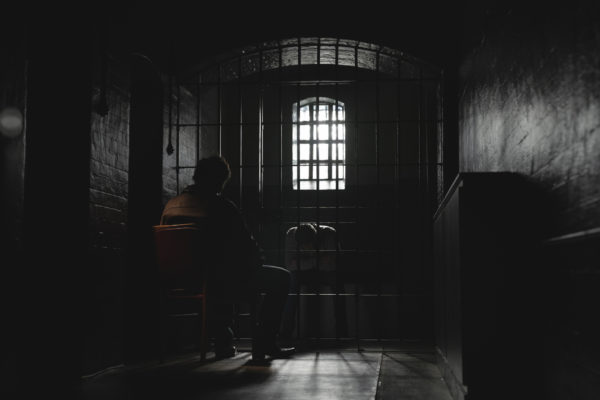
Kelly McNeely: Filmmaking is obviously a great passion for you, what brought you to filmmaking? What brought you to genre film, and what inspires you?
Adam Ethan Crow: I’ve always loved movies. Most people say that and most of us do, we grow up on it. I’m a huge genre fan, because to me, like I’ll watch any movie if it’s great, and I can watch bad movies and see good things in them. Because anyone who finishes a movie? Right there. There’s five stars out the door, because it is so hard to get it done. And the reason I love genre is like, with comedy and horror there’s an immediate reaction. If you see something scary, you jump, if you hear a funny joke, you laugh. And so I love the immediacy of it. But one thing I love about genre is the fact that horror fans are pretty awesome. We got into some great festivals like Frightfest, Macabre and stuff. But if you’re into horror, you know, you’ll see someone in a black cape and eyeliner on the bus because it’s Tuesday, because that’s what they want to do. That’s what they feel like. There’s an expression to it, we kind of have a certain culture, we gravitate towards history.
It’s almost like when you really get into genre films — especially horror — you become a historian. You go, oh yes this happened, and you talk about the effects in this, and it’s like, when I did Lair, A Nightmare on Elm Street was huge for me. When I first saw it — the first one — I came home and I got into bed. If you remember the scene, there’s a part of Freddie leans through the wall. I literally tapped on my wall before I went to sleep, because there’s like a rubber effect, where he just leans over the bed. And I tapped on the wall to go, ok, yeah that’s solid.
I think you invest in it. And also the people as well; when you go to FrightFest or wherever, you go to horror festivals, like Hex After Dark was insane in Canada, and Macabre had 45,000 people livestreaming screenings during COVID. That’s insane, right? For 10 days, Mexico City is given over to the city of us crazies in eye make up, dressed as Jason or something. It’s insane. But, yeah, it’s kind of like, I’ve always been inspired by it. And I also think that, you know, these are the sort of people who go to these festivals, and you’re sitting there and you’re talking about horror, then you’ll be talking about, I don’t know, I just got a new cat. But you’re talking to Jason Voorhees about something with someone who just got an axe in their head.
I think it’s a real true expression of — it sounds really wanky or pompous — the art form. You get people who make a movie, like The Blair Witch Project, which was incredible. It changed the whole game for everybody. And it’s insane. And that was made for like, not a lot of money. And then there’s Paranormal Activity, and things like The Exorcist and A Nightmare on Elm Street. But it influences your choices. So when we made Lair, I also love things like The Thing, the big Hollywood ones where you can see the creature and see the kill. So for instance, although there’s a part of Lair which has found footage, there’s that scene where the guys are watching the footage in the room, and the camera actually goes through the screen, and then we can watch it properly.
Because I also thought, wouldn’t it be cool if when we see the murders or the kills happen, it’s not in a locked off, sort of static field, surveillance camera. You know, I want to see when this thing attacks. And so we thought if we can go in there, through the camera, through the screen, then the audience is going okay, now we’re seeing what actually happened at that point, rather than just cutting between footage and clips and stuff. That came from loving these movies and watching them and going, ok, what do I want. In The Conjuring, I want to see what happens in that room with the doll. When I’m watching a lot of these found footage movies, I want to see what really happens when the creature attacks. And because I’m building my own world, I could do that.
Kelly McNeely: If you could recommend three horror movies — or three genre movies — to someone, whether they’re a long standing fan and you just think they’re really cool movies, or to someone who’s never got involved in the genre before and needs a good place to start. What would you recommend to someone, like, these are three movies you’ve got to watch?
Adam Ethan Crow: I would say… Look, The Exorcist has been around for so long. But it’s one of those films not only was it the only one nominated for an Oscar — see that’s something as well, you learn about horror when you’re into it — but also, the story is so real. When you see a lot of movies nowadays, people go, well, why did you all split up to look for the monster? Surely you should stay together. Little things like in The Exorcist, when the mom is trying to get help, and she’s going to the priest, and she goes, well don’t you think I’ve done that. They make logical choices in that. And for me, it is such a really well told story.
I met a really famous director a while ago, and he said to me, when you make your movies, all you want is a good story told well. Sometimes it’s told on an iPhone, or sometimes in black and white, or it’s a musical, but just tell me a story. All of this is just stories, right? And you know, to me, that was really inspiring. So I’ll definitely say The Exorcist. And it’s got to be A Nightmare on Elm Street, because that was the thing that really, really shook me up and made me think about a few things. And then there’s, I would say, two films. One of them, which I genuinely thought was really well done — because obviously I can go back to The Blair Witch Project, which, obviously, these are all the classics — but if I’m thinking outside the box, I would say there was a film called The Last Exorcism. Did you ever see that one?
Kelly McNeely: I love that one.
Adam Ethan Crow: How good was that?! It was so good. You’re kind of going, are they? What is it? For the way they did it, the way they shot it and stuff, that to me was so well done. And then the other one, which isn’t really a horror film, would probably be The Invitation. That was another one shot for a few hundred grand in one house. And I honestly believe that should have been huge, but not a lot of people sort of know it unless you know it. But again, a couple hundred grand, shot in a couple of weeks, in one house. And it’s a great movie, and the tension is brilliant. And so I would say check those out. But I would also say… watch Lair. Lair’s pretty good.
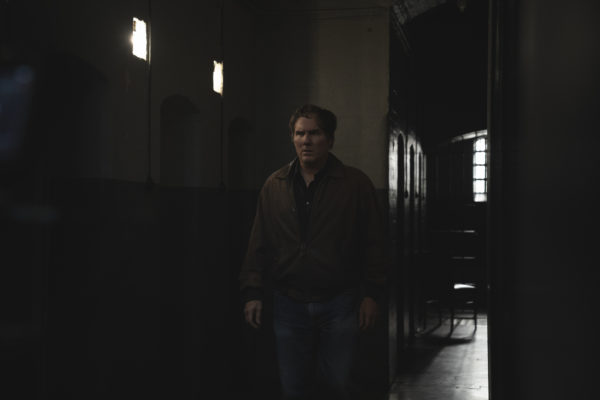
Kelly McNeely: What was your proudest achievement in the making of the film, or your proudest moment as a filmmaker with this as your first feature?
Adam Ethan Crow: My proudest moment — and this is hands down — is Shelley [Atkin] who’s never produced anything the world — and she happens to be my partner as well in life — coming on board to help me, because she said to me when for those four years I was trying to get it made, she said all you really need is one producer to believe in, and you’ll get it done. Turned out, she was that one producer, even though at the time she wasn’t.
But overall, I would say the casting, because we actually made it in November 2019. We shot for 21 days, one camera, no money, in central London, an expensive city. And when we went to cast it, we decided — and although now the world is changing, and for the better with diversity and opening up the world — we said right, we’re going to cast the best people for the role. So for instance, you’ll notice there is an all female family, right? We went out to casting agents, and we said this role is Carl or it’s Carly, because it’s basically a woman who’s been divorced with family, and she’s now in a new relationship. It doesn’t matter if the relationship is with a man or a woman, Carl or Carly. Same with the kids. It’s a 16 year old, but Joey can be Josephine or Joe, it doesn’t matter. It’s a 16 year old kid who’s a bit of a chore at times. I’m going to casting agents who are saying, well we’re not going to take the role unless you specify the ethnicity and gender. It doesn’t make any difference to the movie. So let’s just get everyone and see what happens.
We have men come for Carl, and for Joey. We ended up casting the best people on the day, and they happened to be all female. And we did that with the crew as well. So 40% of our HODs identified as female. When we did the Gay Pride scene. We actually went out to an LGBTQ extras agency so everybody there was authentic. Partly because we had no money, and they bought their own costumes, which is so cool. But they were so awesome, because we shot at the end of November, so it’s like minus two or something. And of course, Pride is in the summer, there’s people in crop tops going, I’m freezing! But it’s not really cold because I’m acting! And we were able to take over the street for only two hours, because we had no money.
So it was like, my proudest part, I think, was the people that we were lucky enough to end up working with. I don’t say it’s painless, things went wrong. So many things went wrong, they always do. But I think no matter what you do in life, be it you want to start a band or open a coffee shop or whatever. If you surround yourself with the right people, you will be astonished by what you can achieve. Honestly, I got blown away. We take that for granted, genuine people. We worked on this film, like honestly, it was patriots not mercenaries, no one was checking their watch. Everybody was there. Because we went out to actors and said, we’ve got this amount of money. That’s what we’ve got. And they were like — and loads of them said no, which is totally cool. They’ve got bills to pay. And I understand that — but a lot of them went, the script’s fun. I’ve got this this week. Let’s do it. And the same with the crew. Some of them went, well, I can give you a week, but I’ve got a friend who can come and do the rest of the shoot.
Before I got into film, I wrote a bit for TV, and I’ve written some screenplays that have been optioned and things like that — but as a writer. I’ve never been a director. So I do know people in the industry, and I’ve made my short films. So Stuart Wright, who’s my co-producer, and Shelley Atkin, the producer, and she was also the DP, he knew people, Shelley knew people, and we were able to just grab all these people together, and the ones that believed in what we were trying to do. Honestly, they were there. If we needed them 16 hours a day, they were there. If we needed them to come in for pickups, they were there. Emily, like I said, that shot I was talking about, she met up with the people doing the VFX in someone’s house with a green sheet to do it.
But then again, you know, the people we worked with on the VFX side were so good that they were able to make it all work. And I think that’s it. I mean, our composer was Mario Grigorov. I mean, he did Fantastic Beasts, and he did Precious. He did part of Tarzan. And I met him through a friend of mine, and he introduced me to him a while ago, and we became friends, and he came on board. He did an entirely original score. Honestly, it was insane. It was insane. At one point he came back to me and said, “for 5000 pounds I can get the orchestra in Berlin!” and I’d be like, mate, we don’t have that. “Okay, I’m just putting it out there, if you want a full orchestra, just one day!”
And it was people like that, you know, it’s crazy. So yeah, my proudest thing was the people we worked with. It’s awesome.
Kelly McNeely: It sounds like it was a passion project for everyone, which is really, really lovely to see. That’s the kind of project you want to get involved in, with people that just genuinely want to be there, that want to help out.
Adam Ethan Crow: That’s entirely true. And it’s all about whatever you’re interested in doing in life. Like I don’t expect to be doing Marvel films. But if we can do the next movie, and I can pay my rent, and I can work with people I’m happy to see on a daily basis. That’s pretty cool. Because I used to work in a Pizza Hut, and I used to be like, in the bowels of the basement opening huge tins of sauce. That was my life, right? I’ve worked in a piano warehouse. I had loads of bad jobs. And, you know, with this, it was that whole thing where we went, we’ve got an opportunity, we’ve got a little bit of money in the bank. Let’s see what we can do. And off the back of that, we worked with 1091 and we’ve got another film in the works. Not a huge budget, but we’ve got real money so we can do it properly.
And the biggest compliment I’ve got was Michael Grace — who wrote Poltergeist and produced Sleepwalkers and all the other Stephen King films — I got an email from him because he saw Lair at Salem Film Festival. And I obviously thought a friend of mine was just doing a gag, as you do. And then I thought, well, I’ll just Google the email address it was from. And it was him! And we’ve now had about five Zooms. And he’s asked if I’m interested in directing a movie for him, which is insane, right? It’s insane, right? And even talking to you though, if we hadn’t all got together and made this little movie, I’m talking to you on the other side of the world, this conversation never would have happened.
Again, it comes back to whatever you’re doing in life, if you have some passion for it, and you surround yourself with really cool people, honestly, you never know what’s gonna happen. And I think sometimes it goes right, sometimes it goes wrong. Like I said, we were trying to do this for years, and then so many we thought we couldn’t get it off the ground. But the thing about it is, if you don’t try, you’re never going to know. And we’ve all got a million friends of ours who have got these great dreams, but they go, well, I’m not gonna pursue them because it might go wrong, but then it might not. My mum used to say to me when things go wrong, she’d say “if you fall in the river, check your pockets for fish”. I found fish. That’s pretty cool.
Lair is available now on VOD.
'Civil War' Review: Is It Worth Watching?
Follow our new YouTube channel "Mysteries and Movies" here.

Movies
‘Longlegs’ Creepy “Part 2” Teaser Appears on Instagram
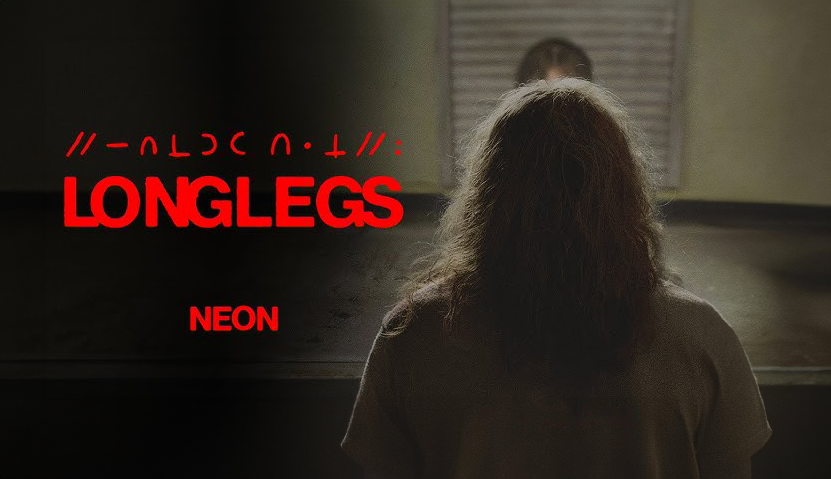
Neon Films released an Insta-teaser for their horror film Longlegs today. Titled Dirty: Part 2, the clip only furthers the mystery of what we are in for when this movie is finally released on July 12.
The official logline is: FBI Agent Lee Harker is assigned to an unsolved serial killer case that takes unexpected turns, revealing evidence of the occult. Harker discovers a personal connection to the killer and must stop him before he strikes again.
Directed by former actor Oz Perkins who also gave us The Blackcoat’s Daughter and Gretel & Hansel, Longlegs is already creating buzz with its moody images and cryptic hints. The film is rated R for bloody violence, and disturbing images.
Longlegs stars Nicolas Cage, Maika Monroe, and Alicia Witt.
'Civil War' Review: Is It Worth Watching?
Follow our new YouTube channel "Mysteries and Movies" here.
Movies
Melissa Barrera Says ‘Scary Movie VI’ Would Be “Fun To Do”

Melissa Barrera might literally get the last laugh on Spyglass thanks to a possible Scary Movie sequel. Paramount and Miramax are seeing the right opportunity to bring the satirical franchise back into the fold and announced last week one might be in production as early as this fall.
The last chapter of the Scary Movie franchise was almost a decade ago and since the series lampoons thematic horror movies and pop culture trends, it would seem they have a lot of content to draw ideas from, including the recent reboot of slasher series Scream.
Barerra, who starred as final girl Samantha in those movies was abruptly fired from the latest chapter, Scream VII, for expressing what Spyglass interpreted as “antisemitism,” after the actress came out in support of Palestine on social media.
Even though the drama wasn’t a laughing matter, Barrera might get her chance to parody Sam in Scary Movie VI. That is if the opportunity arises. In an interview with Inverse, the 33-year-old actress was asked about Scary Movie VI, and her reply was intriguing.
“I always loved those movies,” the actress told Inverse. “When I saw it announced, I was like, ‘Oh, that would be fun. That would be so fun to do.’”
That “fun to do” part could be construed as a passive pitch to Paramount, but that’s open to interpretation.
Just like in her franchise, Scary Movie also has a legacy cast including Anna Faris and Regina Hall. There is no word yet on if either of those actors will appear in the reboot. With or without them, Barrera is still a fan of the comedies. “They have the iconic cast that did it, so we’ll see what goes on with that. I’m just excited to see a new one,” she told the publication.
Barrera is currently celebrating the box office success of her latest horror movie Abigail.
'Civil War' Review: Is It Worth Watching?
Follow our new YouTube channel "Mysteries and Movies" here.
Lists
Thrills and Chills: Ranking ‘Radio Silence’ Films from Bloody Brilliant to Just Bloody
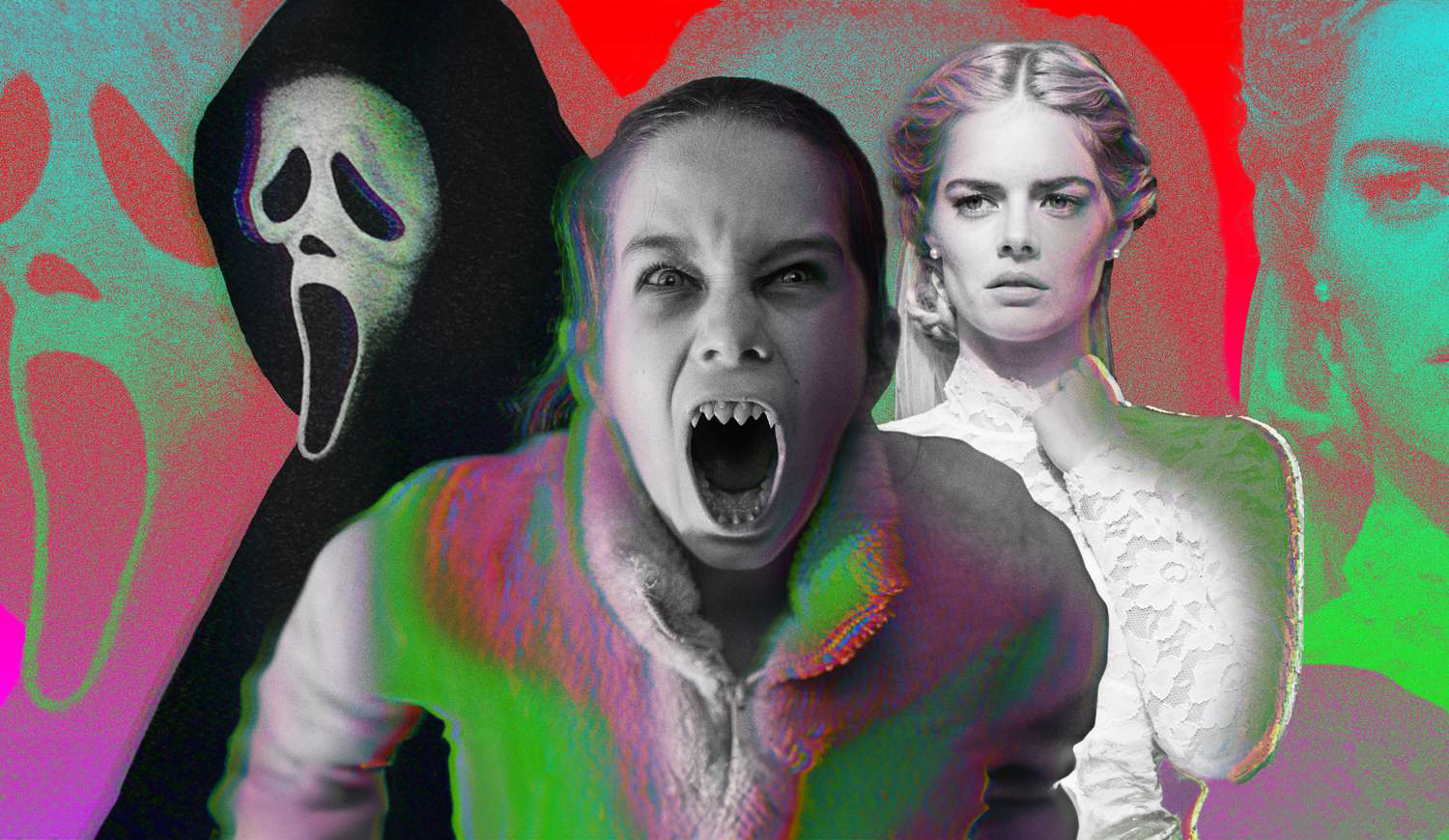
Matt Bettinelli-Olpin, Tyler Gillett, and Chad Villella are all filmmakers under the collective label called Radio Silence. Bettinelli-Olpin and Gillett are the primary directors under that moniker while Villella produces.
They have gained popularity over the past 13 years and their films have become known as having a certain Radio Silence “signature.” They are bloody, usually contain monsters, and have breakneck action sequences. Their recent film Abigail exemplifies that signature and is perhaps their best film yet. They are currently working on a reboot of John Carpenter’s Escape From New York.
We thought we would go through the list of projects they have directed and rank them from high to low. None of the movies and shorts on this list are bad, they all have their merits. These rankings from top to bottom are just ones we felt showcased their talents the best.
We didn’t include movies they produced but didn’t direct.
#1. Abigail
An update to the second film on this list, Abagail is the natural progression of Radio Silence’s love of lockdown horror. It follows in pretty much the same footsteps of Ready or Not, but manages to go one better — make it about vampires.
#2. Ready or Not
This film put Radio Silence on the map. While not as successful at the box office as some of their other films, Ready or Not proved that the team could step outside their limited anthology space and create a fun, thrilling, and bloody adventure-length film.
#3. Scream (2022)
While Scream will always be a polarizing franchise, this prequel, sequel, reboot — however you want to label it showed just how much Radio Silence knew the source material. It wasn’t lazy or cash-grabby, just a good time with legendary characters we love and new ones who grew on us.
#4 Southbound (The Way Out)
Radio Silence tosses their found footage modus operandi for this anthology film. Responsible for the bookend stories, they create a terrifying world in their segment titled The Way Out, which involves strange floating beings and some sort of time loop. It’s kind of the first time we see their work without a shaky cam. If we were to rank this entire film, it would remain at this position on the list.
#5. V/H/S (10/31/98)
The film that started it all for Radio Silence. Or should we say the segment that started it all. Even though this isn’t feature-length what they managed to do with the time they had was very good. Their chapter was titled 10/31/98, a found-footage short involving a group of friends who crash what they think is a staged exorcism only to learn not to assume things on Halloween night.
#6. Scream VI
Cranking up the action, moving to the big city and letting Ghostface use a shotgun, Scream VI turned the franchise on its head. Like their first one, this film played with canon and managed to win over a lot of fans in its direction, but alienated others for coloring too far outside the lines of Wes Craven’s beloved series. If any sequel was showing how the trope was going stale it was Scream VI, but it managed to squeeze some fresh blood out of this nearly three-decade mainstay.
#7. Devil’s Due
Fairly underrated, this, Radio Silence’s first feature-length film, is a sampler of things they took from V/H/S. It was filmed in an omnipresent found footage style, showcasing a form of possession, and features clueless men. Since this was their first bonafide major studio job it’s a wonderful touchstone to see how far they have come with their storytelling.
'Civil War' Review: Is It Worth Watching?
Follow our new YouTube channel "Mysteries and Movies" here.
-

 News7 days ago
News7 days agoWoman Brings Corpse Into Bank To Sign Loan Papers
-

 News6 days ago
News6 days agoBrad Dourif Says He’s Retiring Except For One Important Role
-

 Strange and Unusual6 days ago
Strange and Unusual6 days agoMan Arrested for Allegedly Taking a Severed Leg From Crash Site And Eating It
-

 Movies7 days ago
Movies7 days agoPart Concert, Part Horror Movie M. Night Shyamalan’s ‘Trap’ Trailer Released
-

 Movies7 days ago
Movies7 days agoAnother Creepy Spider Movie Hits Shudder This Month
-
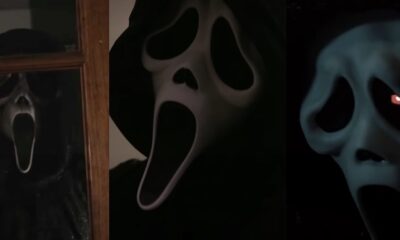
 Editorial6 days ago
Editorial6 days ago7 Great ‘Scream’ Fan Films & Shorts Worth a Watch
-
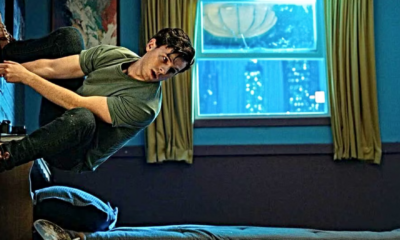
 Movies5 days ago
Movies5 days agoSpider-Man With a Cronenberg Twist in This Fan-Made Short
-

 News4 days ago
News4 days agoOriginal Blair Witch Cast Ask Lionsgate for Retroactive Residuals in Light of New Film
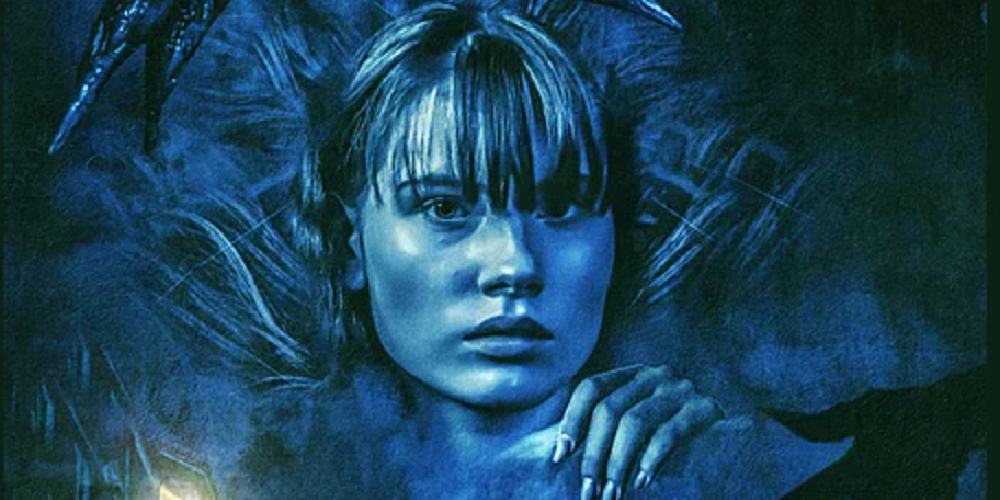
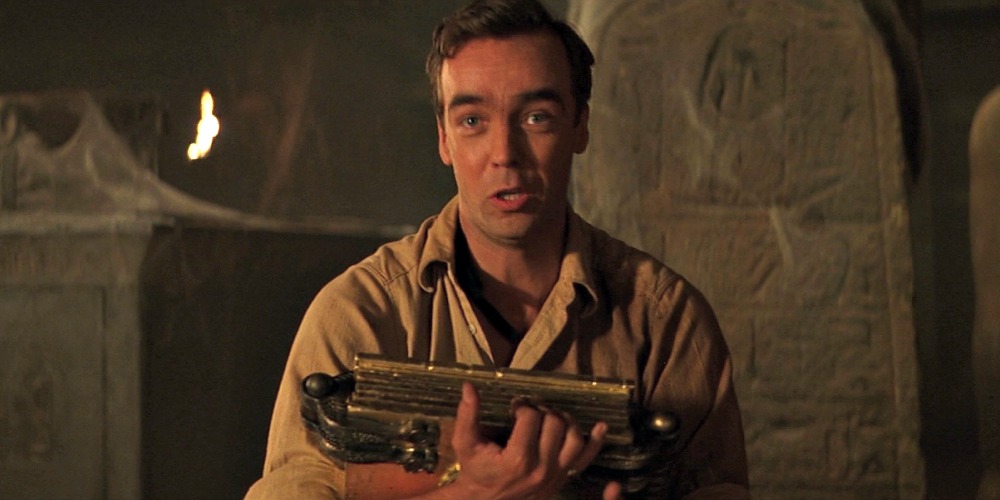




















You must be logged in to post a comment Login